Kitano Tenmangu Shrine can be entered through either the North Gate or the East Gate (Important Cultural Property). It is best to visit Kitano Tenmangu Shrine during the plum blossom season or the season of autumn leaves.
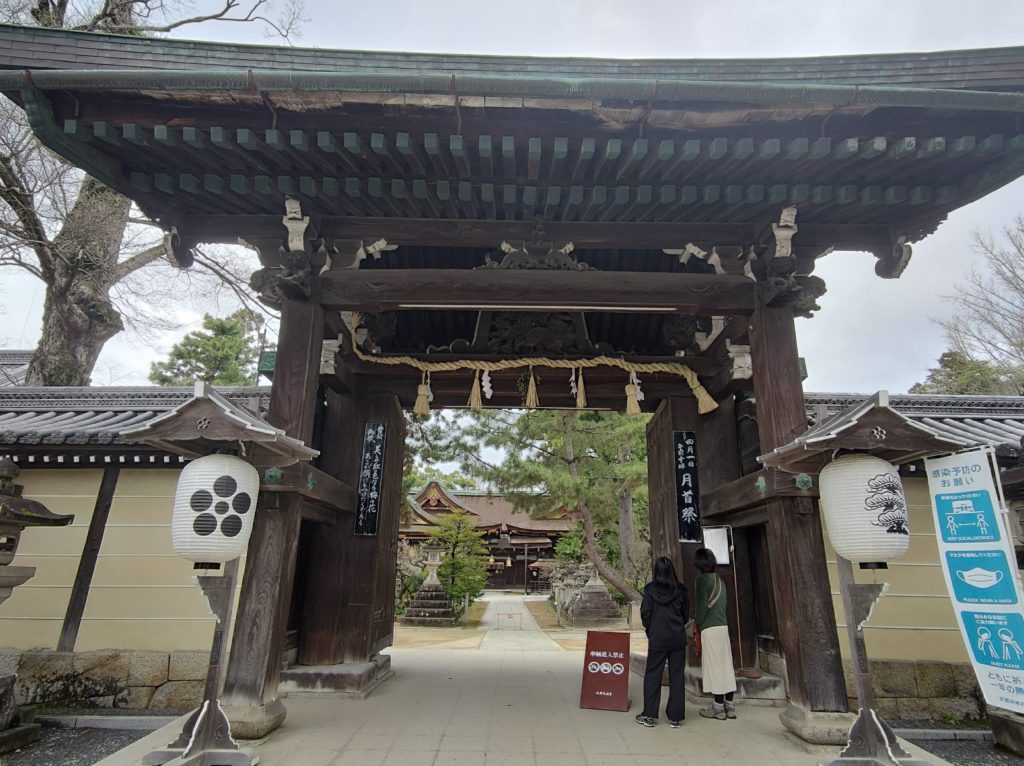
Kitano Tenmangu Shrine, famous as Tenjin-san, is the general shrine of Tenmangu or Tenjin-sha throughout Japan. The shrine dates back to 947 and enshrines the well-known Sugawara no Michizane.
The first thing that catches the eye is the Sankomon Gate. It was built in the Momoyama period (1573-1600). And it is an important cultural property. Emperor Gosei contributed the plaque with characters “Tenmangu” on the gate.
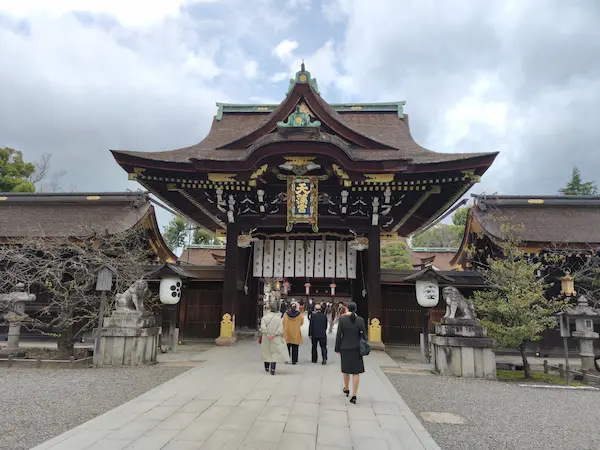

And the main hall is a national treasure.
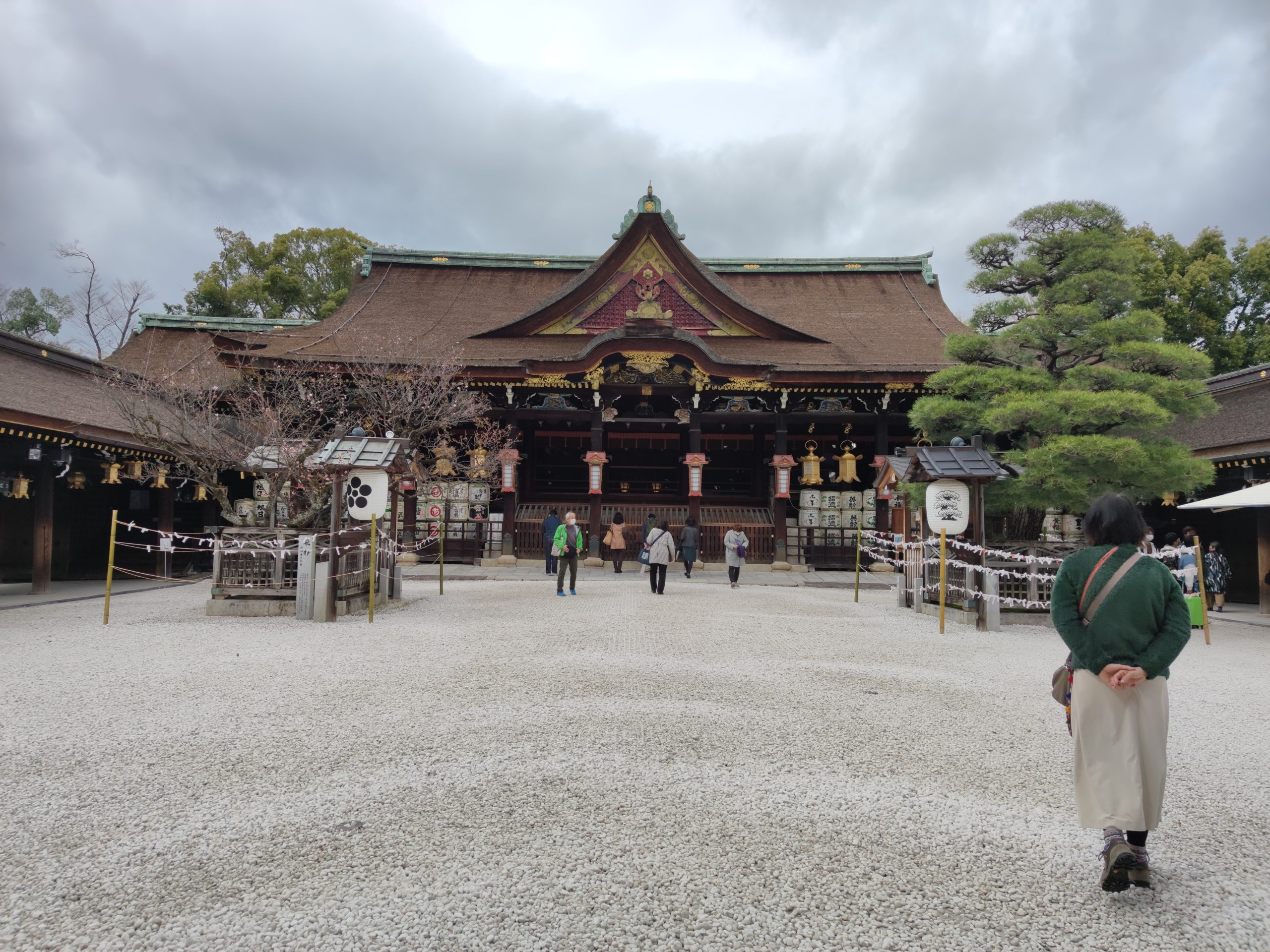
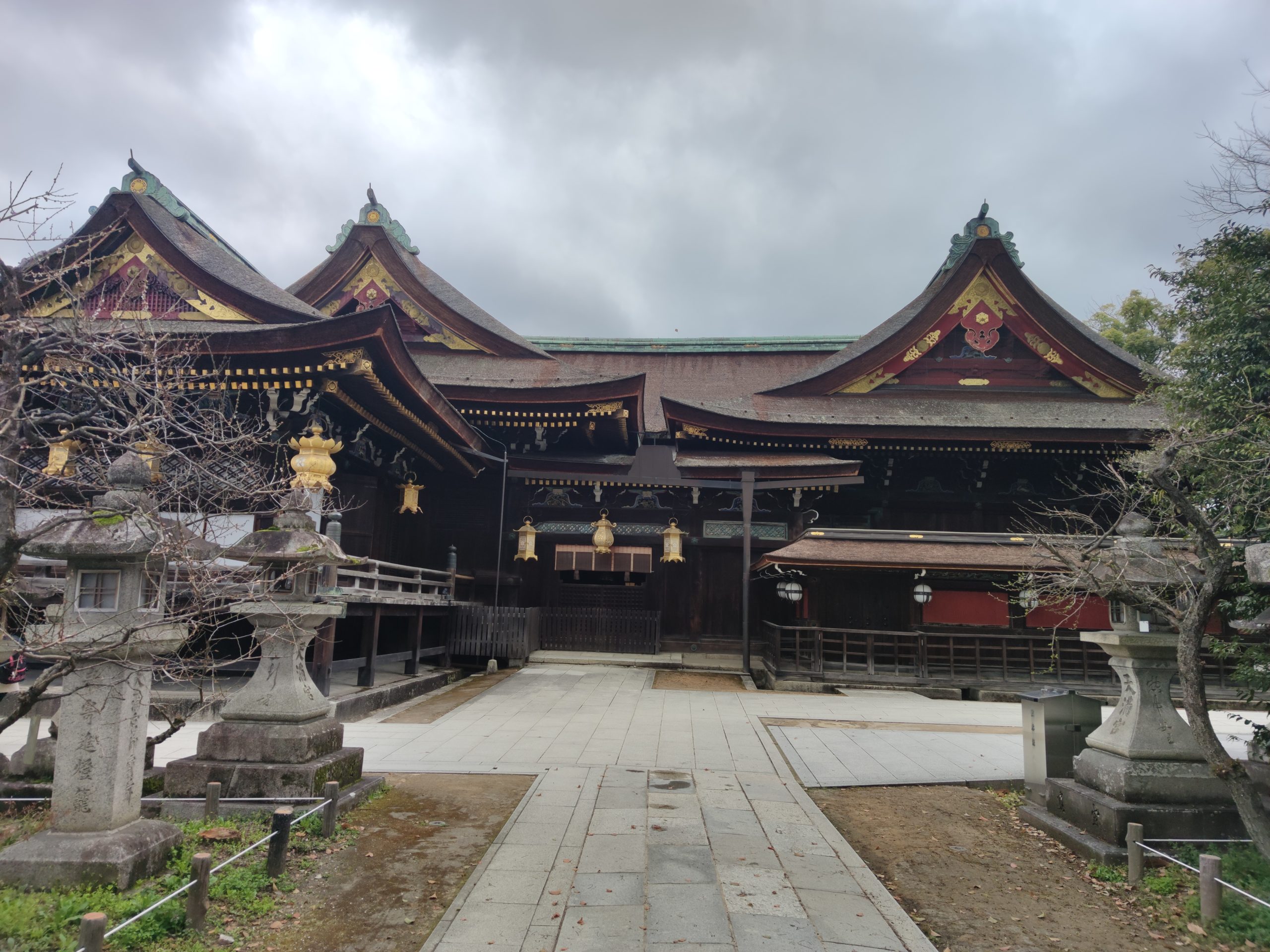
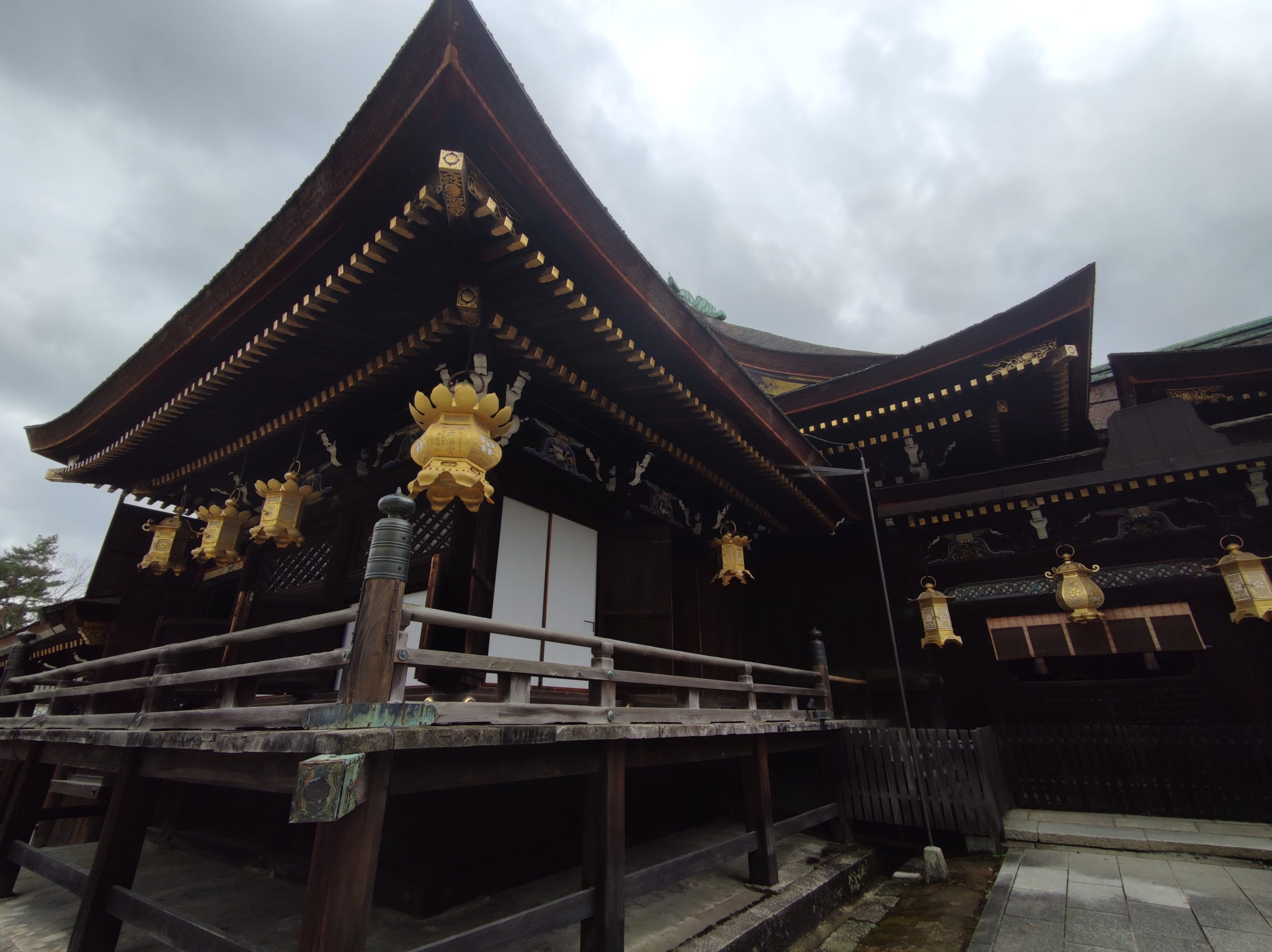
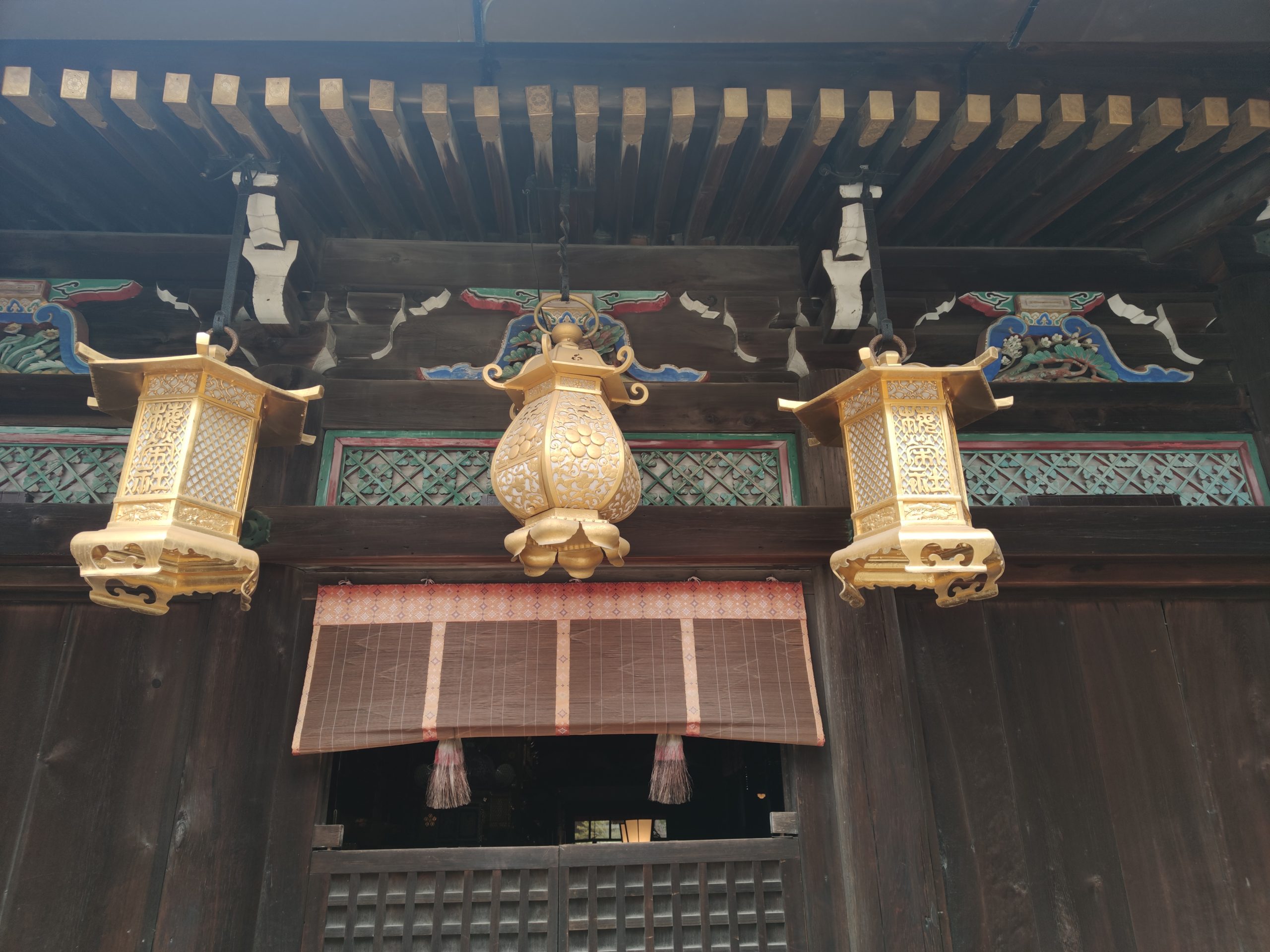
Kitano Tenmangu Shrine and Plums
Kitano Tenmangu Shrine is known not only as a god of learning, but also for its deep relationship with the plum tree (ume).
Many plum trees are planted in the precincts of Tenmangu Shrine, as Michizane Sugawara loved plum blossoms very much. When Michizane was transferred to a new post, he is said to have composed a famous waka poem, “If the east wind blows, don’t forget spring, for there is no master of the plum blossoms. The poem reads, “If the east wind blows, send me its fragrance, O plum blossoms. Even if my master is not here, do not forget the spring”.
Approximately 1,500 plum trees are planted on the grounds of Kitano Tenmangu Shrine, with about 50 varieties ranging from early to late bloomers. Every year from February to March, all these plum trees bloom at the same time, and visitors can enjoy viewing the beautiful plum blossoms. During this period, events such as the “Plum Blossom Festival” and the “Plum Garden Open House” are held, attracting many tourists and locals.
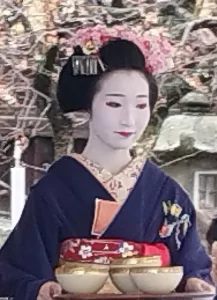
Plum blossoms are also a symbol of Kitano Tenmangu Shrine, and there is a special plum tree called “Tobi Ume” (meaning “flying plum tree”) on the grounds of the shrine. This tree is said to have flown after Michizane when he was transferred to Dazaifu. Because of these legends and historical backgrounds, the ume tree is inseparably linked to Kitano Tenmangu Shrine.
The plum trees at Kitano Tenmangu Shrine not only provide beautiful scenery, but are also deeply rooted in the hearts of visitors as the flowers loved by Michizane. Visitors can get in touch with the spirit of Michizane by admiring the plum blossoms as well as praying to the god of learning.
Odoi
Within the grounds of the Shrine, there are also the remains of the Odoi. Toyotomi Hideyoshi constructed Odoi in 1591 as part of the urban renewal of Kyoto after a long warfare. And also it was a fortification to protect the city from incoming enemies and as a levee to protect the city from the flooding of the Kamo River. The Odoi was a large earthen mound that encompassed a large area, including the Imperial Palace and Nijo Castle. This area is the only part of the palace where you can see a culvert made of hewn stone (drainage).
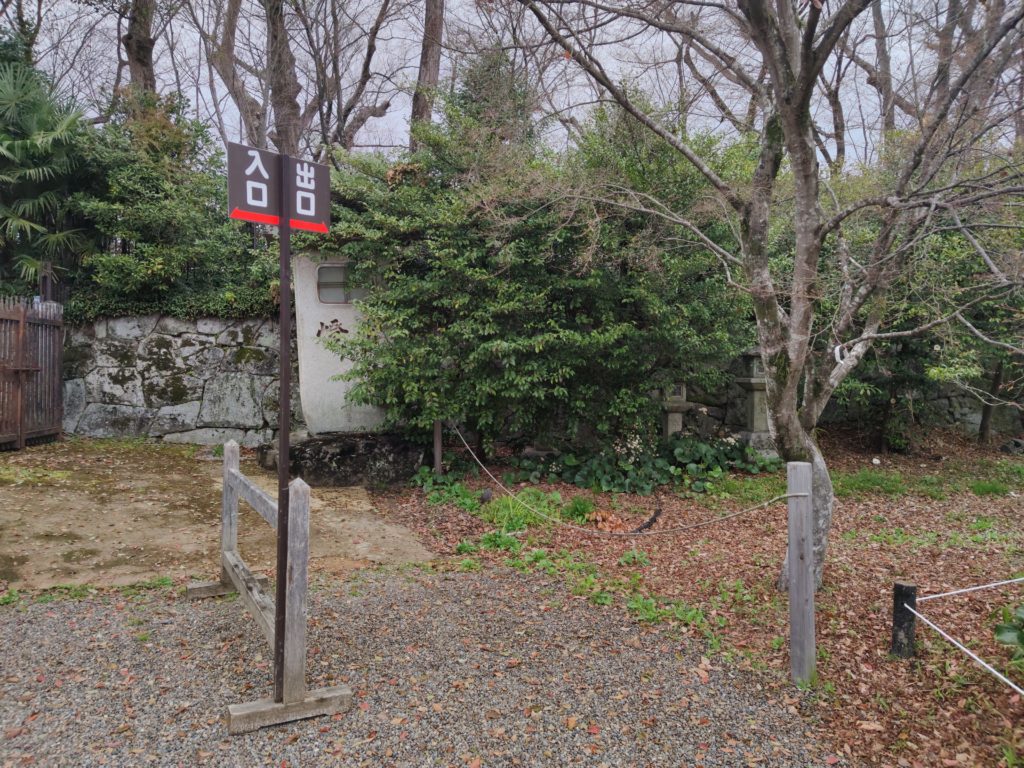
Nearby spots from Kitano Tenmangu
Hirano Jinja Shrine is famous for cherry blossoms.
The Daihouonji Temple, also known as Senbon Shakado, has a national treasure building and several important cultural properties. It is only 10-minute walk.
Visit Yokai Street on the day of the parade.
Related articles:
[…] south from Kitano Tenmangu Shrine, you will find Ichijyo Yokai Street (Daishogun Shopping Street). It is said that the street was […]
[…] it is said that when Sugawara Michizane, who was transferred to Dazaifu and later enshrined at the Kitano Tenmangu Shrine, came to greet Hōhō Uta at Ninnaji Temple, he sat on this stone and waited for Hōhō Uta to […]
[…] Kitano Tenmangu Shrine and Hirano Jinja Shrine are famous for plum trees and cherry trees respectively. So you should visit these shrines in Spring. […]
[…] Kitano Tenmangu Shrine is less than 10 minutes walk from Daihouonji […]
[…] is best to visit Kitano Tenmangu Shrine during the plum blossom season. It is famous for plum flowers and its symbol is also a […]